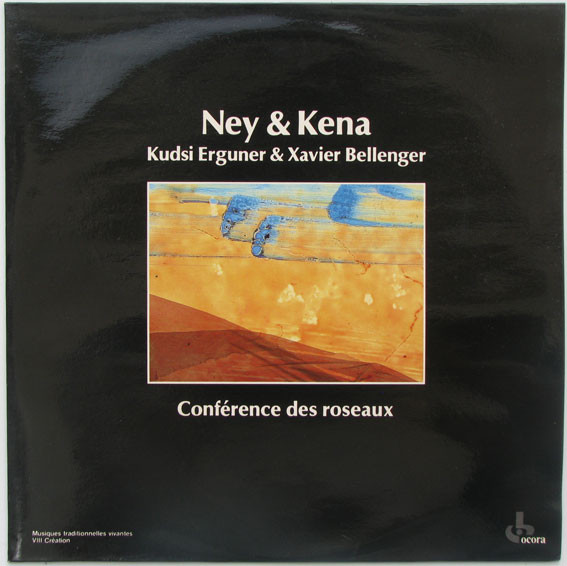

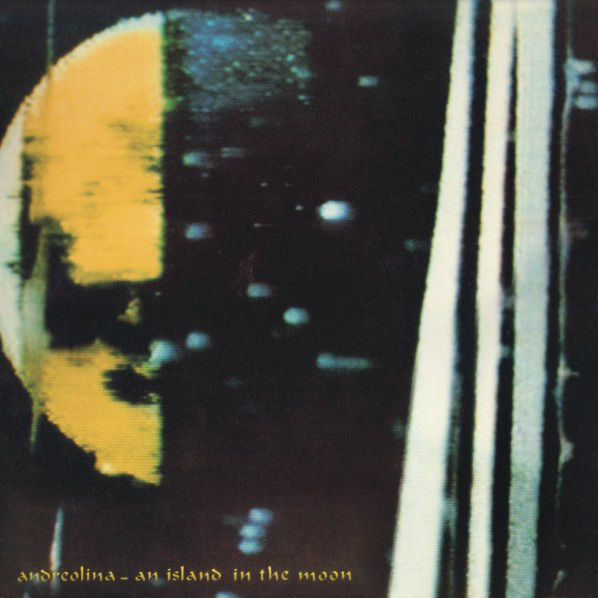
Sublime collaboration between Silvio Linardi (who’s collaborated with David Sylvian, Hector Zazou, Roger Eno, and others) and Pier Luigi Andreoni (whom you may know from The Doubling Riders). Ricardo Sinigaglia makes a few appearances too, first on piano and then on an Akai S 900. This was their only release as Andreolina.
Sprawling, weightless instrumentals that never stay soporific for too long. You can hear Andreoni’s classical training in much of this, and not just because of how much oboe there is, but structurally too. The name of the album comes from an unfinished piece of William Blake prose, and some of the song titles are Blake references as well–so while it might be power of suggestion, there seem to be tinges of romanticism dotted throughout, whereas other moments veer off into jazz. Lots to love here for Elicoide fans.
As an aside, this was released on ADN, the same label responsible for Tasaday’s L’Eterna Risata and the aforementioned Sinigaglia record. Depending on who you ask, ADN can stand for A Dull Note, L’amore del Nipote, or Agnostic Dumplings Nursery.
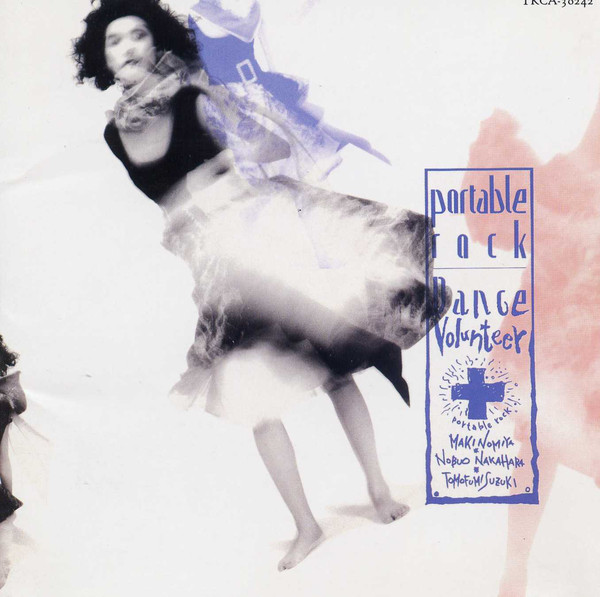
Today we bring you Dance Volunteer, the second and final full-length from Japanese new-wavers Portable Rock. It’s from 1987, but this isn’t the sleek “city pop” sound which contemporary acts like Kero Kero Bonito or Especia aspire to recreate today. Nor is it the coquettish shibuya-kei style which members of Portable Rock went on to pioneer after reuniting to form the much beloved Pizzicato Five. No, this is the big, bold 80s synth pop that time forgot. It seems a lack of commercial success led to the breakup of Portable Rock, and I’m surprised. The songs on Dance Volunteer are full of big, memorable hooks and the kind of spacious synth production that has aged particularly well for modern audiences. Maybe the slick production is the culprit for the abandoning of the project, as it was presumably expensive, and money means more pressure to chart. Yet Dance Volunteer has oddities all over it. Audio quirks stand out everywhere, like little square pegs in the round synth holes that are trying to steer the album into more marketable territory.
Listen to the way “憂ウツの (Hold Me)” breaks periodically to turn into the future, channeling the intro of a 90s house track for trance-like seconds of airtime. Hear how the title track (“ダンス・ボランティア”) is carried by a kind of strange wolf whistle, with an almighty injection of guitar in its chorus that sounds as heady as your first kiss. It’s heart racing stuff. I’m also in love with the vocal lick that “スムース・トーク” (“Sumusu Toku,” a Japanese phoneticization of “smooth talk”) coasts on for its entirety, sounding like a Disney soundtrack to a sunny convertible ride. And the lunar grooves of the ninth track, “キュートな事情” (“Kyuto No Jijou”) make a strong case for it being the first trip-hop track ever made. Listen to this, then cast an ear on any Massive Attack collaboration with Horace Andy, and you’ll see what I mean.
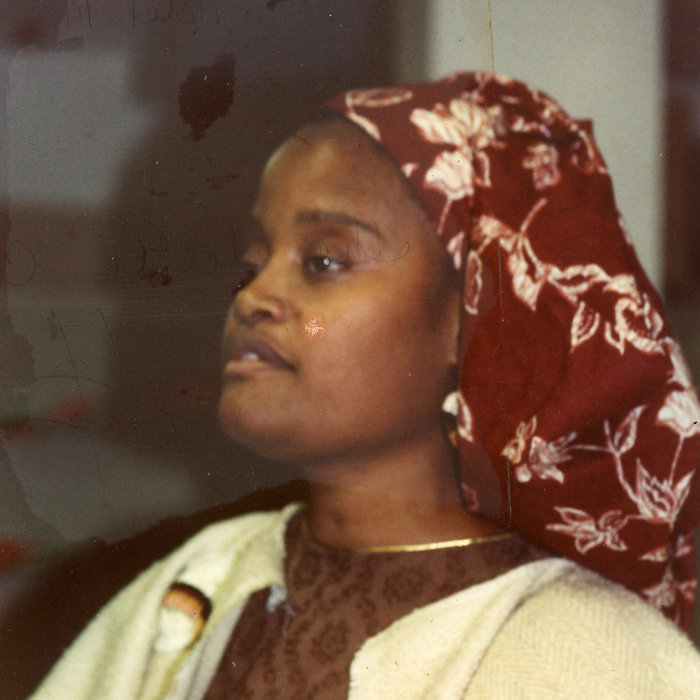
I was deeply saddened to hear of the passing of legendary jazz trumpeter (and occasional zither player) Kelan Phil Cohran at the age of 90 on Wednesday. While his accomplishments are too significant to fully do them justice, he played trumpet with Sun Ra and His Arkestra, co-founded the Association for the Advancement of Creative Musicians (AACM), was a respected educator (one of his students was a young Maurice White), opened the Afro-Arts Theater in Chicago, and invented the Frankiphone (aka space harp), an electric mbira. He also recorded extensively with The Hypnotic Brass Ensemble, a group composed of eight of his sons. Cohran was still regularly performing live until quite recently.
Though African Skies was recorded a later stage in his career (by which point he had already been given the honorific Kelan, meaning holy scripture, by Muslim scholars during a trip to China), it’s considered by many to be a cosmic jazz masterpiece and one of his finest works. His first record since his 1969 Malcolm X memorial, this was recorded live at the Adler Planetarium in Chicago as a glowing tribute to Sun Ra, Cohran’s mentor and friend who had recently passed away. African Skies is mostly acoustic and fairly minimal, but for all its sparsity, it’s hypnotic, deftly expressive, and all the more powerful for doing less. Trumpet, harp, frankiphone, congas, violin uke, guitar, flute, bowed string bass, clarinet, trombone, and vocal riffings by Aquilla Sadalla that, whenever I’ve put this on in social settings, have invariably prompted at least one person to ask what we’re listening to. If the back cover is any indication, this performance looked just as incredible as it sounded.
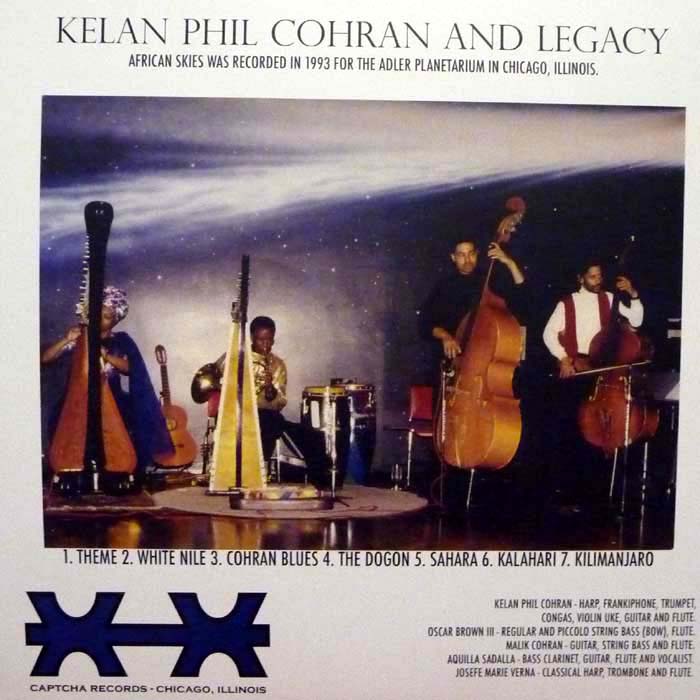
Though I’ve always considered myself a jazz idiot, this record has been an ideal gateway drug into the worlds of cosmic and spiritual jazz, and I can’t think of a better tribute to Cohran’s legacy than giving this some airtime this weekend. Out of respect for his family I’ll be taking down the download link in the next few days, so if you want it, get it now. Thank you for everything, Kelan Phil Cohran!
buy / (download removed)
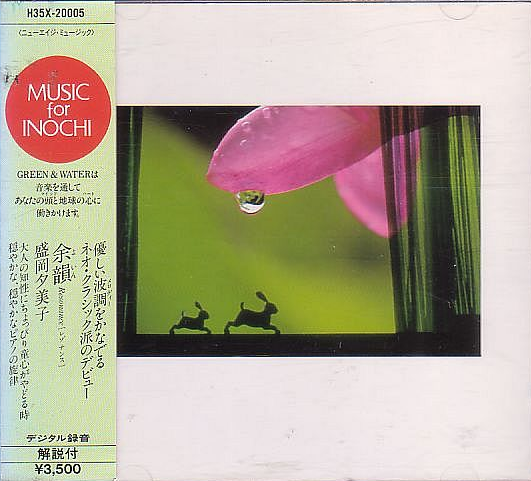
Guest post by Matt Nida (London)
Sometimes the music tells its own story. I bought Yumiko Morioka’s Resonance last year in Tokyo (on the recommendation of someone who knew I’d been devouring records by the likes of Hiroshi Yoshimura, Toshifumi Hinata, Haruomi Hosono and many other names who’ll be familiar to readers of this blog) knowing nothing more than what my ears were telling me – that this was a very beautiful slow-burning piano album; Satie-esque ripples through a tranquil sea of crystalline digital reverb, equal parts Sakamoto, Budd, and the Eno brothers. I fell in love with this album on its own terms, with no real sense of how it fits into the wider story of 1980s Japanese ambient music.
As someone who can neither speak nor read Japanese, piecing together the background of this album is its own adventure, relying a lot on shaky auto-translate services and reasonably intelligent guesswork. Yumiko Morioka was born in 1956, and studied at the San Francisco Conservatory of Music. She spent much of the last three decades in the United States; Resonance is her only solo release, although she later released a collaborative album with Bill Nelson called Culturemix in 1995. Under the pen name of Satoshi Miyashita, she wrote a number of hit songs for idol acts throughout the 80’s including Toshihiko Tahara and other performers from the notorious Johnny & Associates stable.
Dig further into Resonance’s credits and associates and some familiar names start to appear. The album was produced by new age keyboardist Akira Ito, formerly of the Far East Family Band, and was the only LP released on Ito’s Green & Water label that wasn’t one of his own efforts. Morioka herself occasionally played piano for Miharu Koshi, and receives a “special thanks” credit in the liner notes to Hosono’s Omni Sight Seeing.
So it’s tempting to view Resonance primarily as another link in the dense latticework of interconnecting artists and albums from 70s and 80s Japan that enthusiastic Western listeners are only now starting to piece together through blog posts, YouTube algorithms and curatorial mixes. Another piece in the puzzle. But you really don’t need to know any of this stuff. Resonance really is nothing more than a very beautiful slow-burning piano album, one whose exploratory pieces gently unfold in a way that slows time and, in the best Eno tradition, pleasantly colour any environment in which they’re heard. It’s an honest, open record, and one that I hope you will love as much as I do.
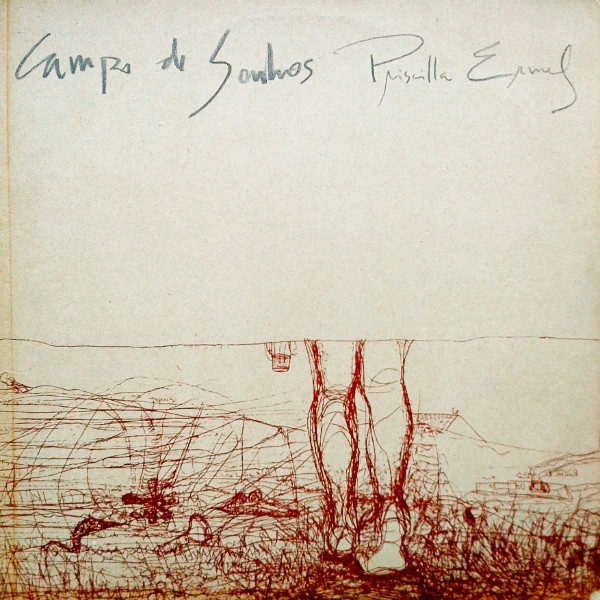
A stunner. Priscilla Ermel is a Brazilian anthropoligist, video artist, and musician based at the Laboratório de Imagem e Som em Entropologia in University of Sao Paulo. If you’ve heard Music From Memory’s extraordinary Outro Tempo compilation, you’ve heard two of her songs, one of which is included on this record. You can watch some of her video work on Vimeo. Also–a cool fact that I was unaware of until just now courtesy of 20 Jazz Funk Greats:
In her ethno-musicological researches, she has studied the indigenous Tupi Mondé people of Brazil, as well as the Dogon in Mali- yes, the same Dogon who, as myth has hit, descended from the Sirians, and were soundtracked by Craig Leon in his Anthology of Interplanetary Folk Music.
Campo de Sonhos (“field of dreams”) is a collection of cinematic instrumental textures that lean alternately towards jazz and classical. There are a few gorgeous, guitar-centric tracks that employ both acoustic (viola caipira) and electric, but the electric moments are more sparse, moody, and textural; almost Durutti Column-esque. Elsewhere, a laundry list of instruments: kalimba, berimbau, viola-de-cocho, chirimia, ocarina, nepalese flute, Jew’s harp, piano, saxophone, cello, violin, synth, and a slew of drums including congas, surdo, bombo, gongs, cultrun, and cajón. And while there are moments of uninhibited percussive joy and spiritual jazz, these songs feel focused, elegant, even stripped back at times. Thank you Kosta for the reminder to share an old favorite!
Also, if things look a bit rough around here, it’s because I’ve just switched to WordPress and am still finding my way around–am hoping to have more user-friendly navigation and archive up soon. Please bear with me in the meantime! (I’d also like to thank a very nice reader named Kenji who spent a solid hour and a half writing and tweaking code and holding my hand through learning about plug-ins to fix a few hundred broken links. Thanks Kenji!)

Vangelis Katsoulis was born in Athens in 1949 and since then has been prolific, dabbling in minimalism, jazz, choral, and symphonic work. As his second full-length, The Slipping Beauty is a startlingly polished collection of 16 short pieces, many of which feel more like impressions than songs. I would guess that Katsoulis was influenced by the pulsing, layered structures of gamelan (“Overcast”), as well as by traditional Japanese drumming (“The Sound Of The Stone”). Despite some of these more historical reference points, this music is highly futuristic, with tracks like “The Slipping Beauty” feeling like a synthetic cyborgian homage to Steve Reich. From the liner notes: “The title of this record is a paraphrase of Tchaikovsky’s The Sleeping Beauty. It points at the idea of beauty which comes to the artist as an inspiration and suddenly vanishes. In addition it’s a reference to the fleeting nature of physical beauty.”
As an aside, three of these tracks have been remixed and released together as The Sleeping Beauties, including this very good Telephone rework of the title track, though confusingly the record itself has yet to be reissued.
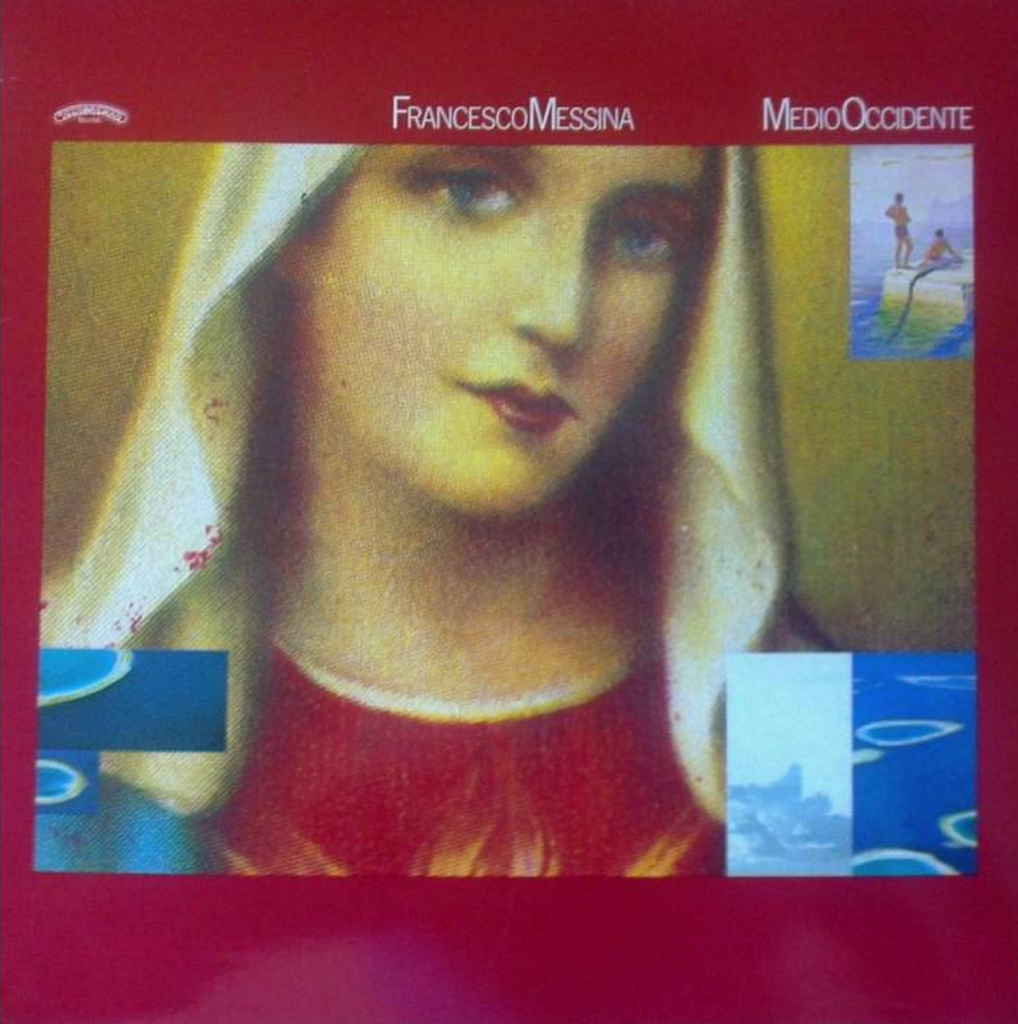

A bit out of character (guitars!), but I’ve been thinking about Portland a lot this week, and Cleaners From Venus reminds me of biking around leafy Oregon residential areas in the spring. By 1987 the band had effectively became a vessel for Martin Newell’s oddball pop ethos, one which was fraught with contradictions. Sharp, smart, often really pretty pop songs recorded in ragged-edged irreverence; serious musicianship undercut by clownish interlude samples; distant, aching vocals suggesting alienation, followed by frenetic, jangling optimism–all this marked by Newell’s signature relentlessness. His enormous catalog and the consistency of his output in spite of having been largely ignored by the music industry until much later in his career suggest an incredible commitment to a sensibility that, in spite of drawing so heavily on nostalgic references, was still far ahead of its time. This is one of my favorite of his, and it hasn’t been printed since 2003. Enjoy!
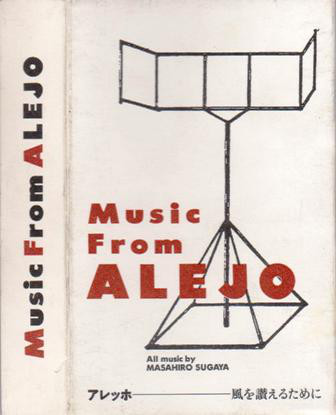
Really sparse and beautiful ambient minimalism made to score the dance theatre piece Alejo performed by the Pappa Tarahumara dance company (which is still active today, and apparently once performed at Reed College). Ebbs and flows of activity, with busier synthetic tracks like “Straight Line Floating In The Sky” and “Mistral,” gauzy pastoral moments suggestive of Hiroshi Yoshimura’s Green (“Theme of Alejo”), and piano meandering that reminds me of Toshifumi Hinata’s jazzier piano moments–but all done a little bit more roughly, this being a self-released cassette. Prismatic and ringing. Perfect picnic soundtrack.
(download link removed as reissue is forthcoming!)